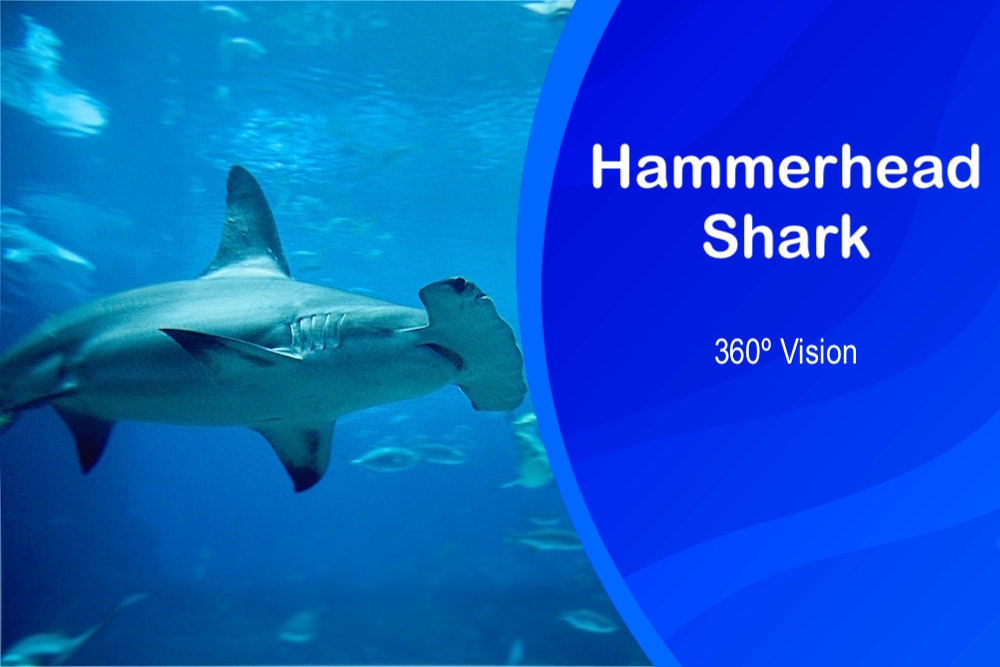
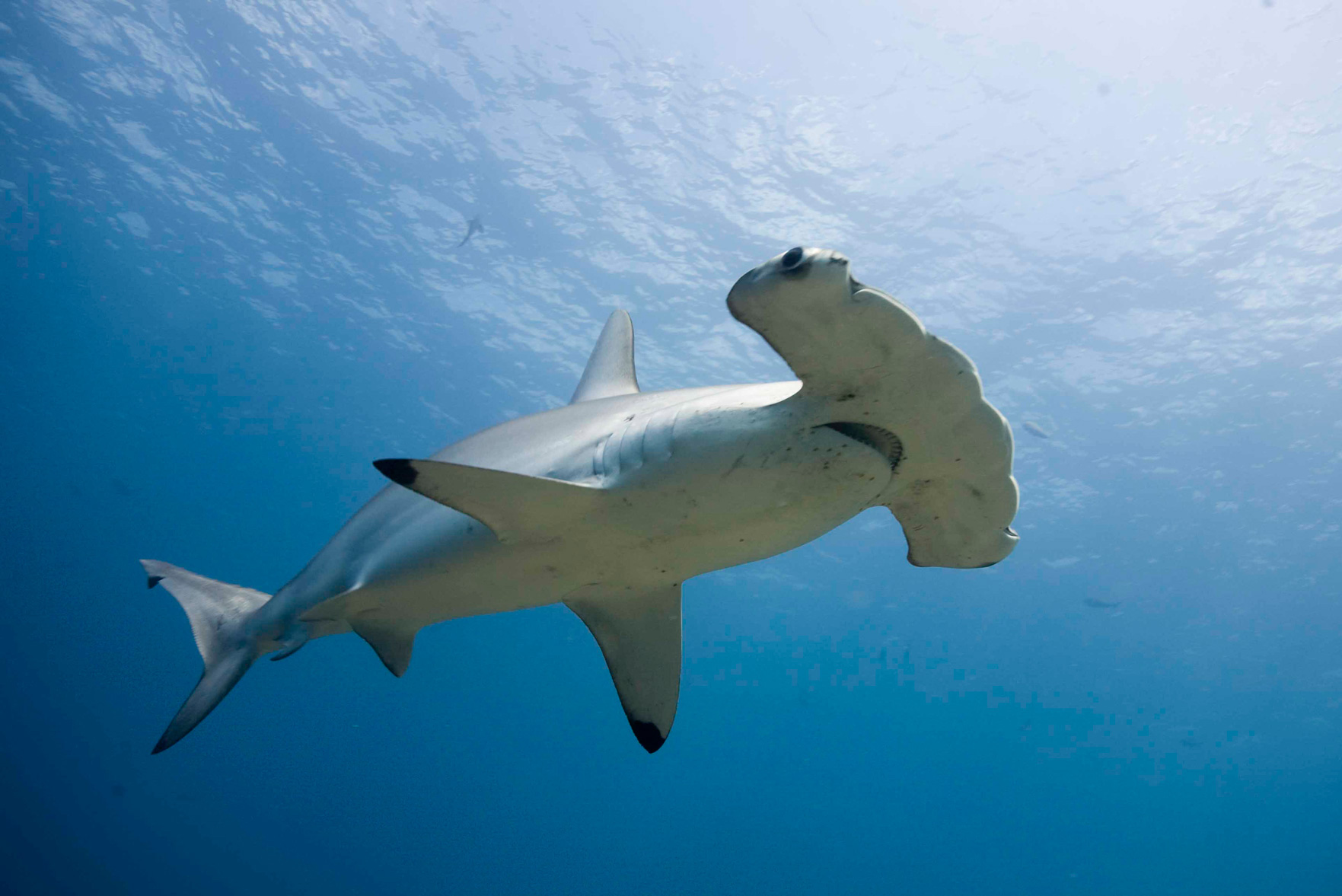
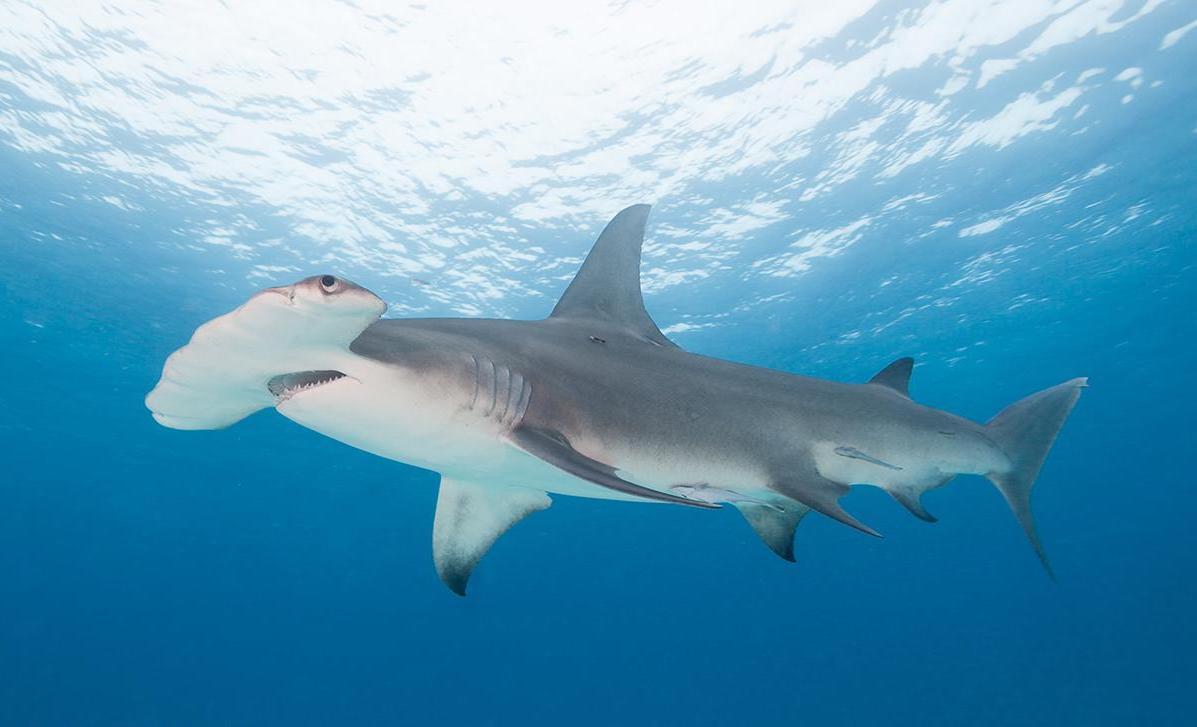
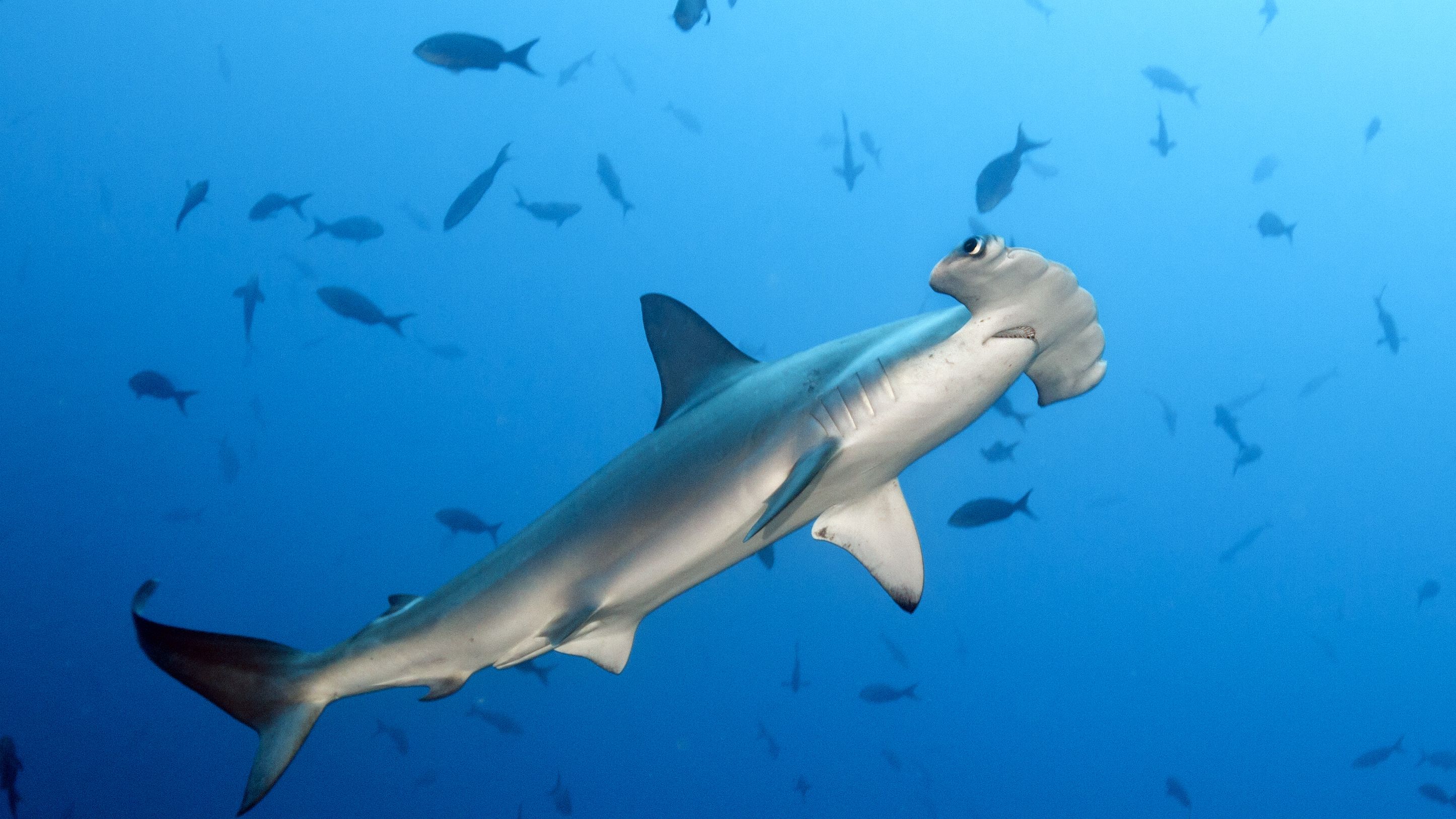
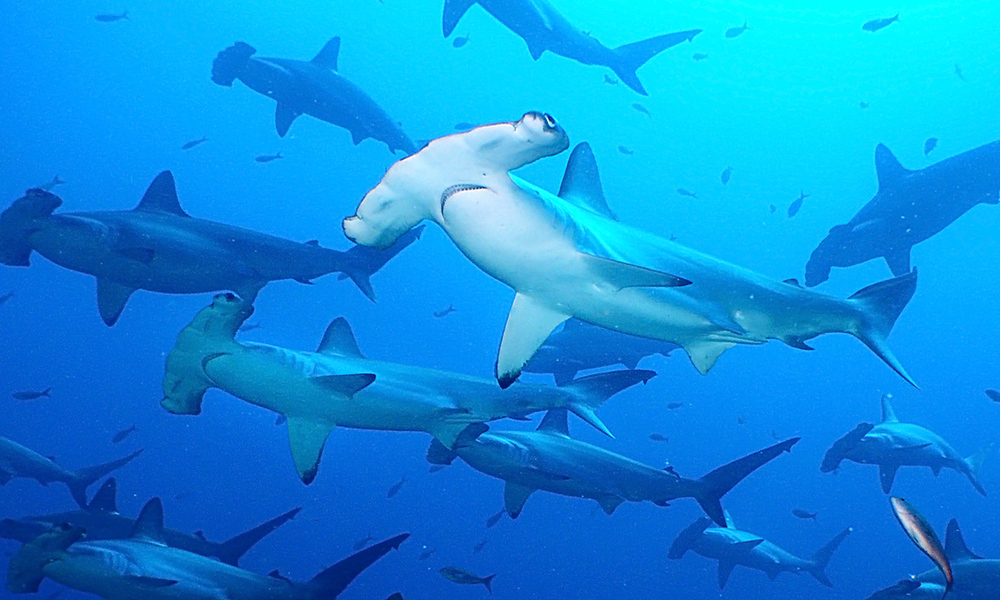
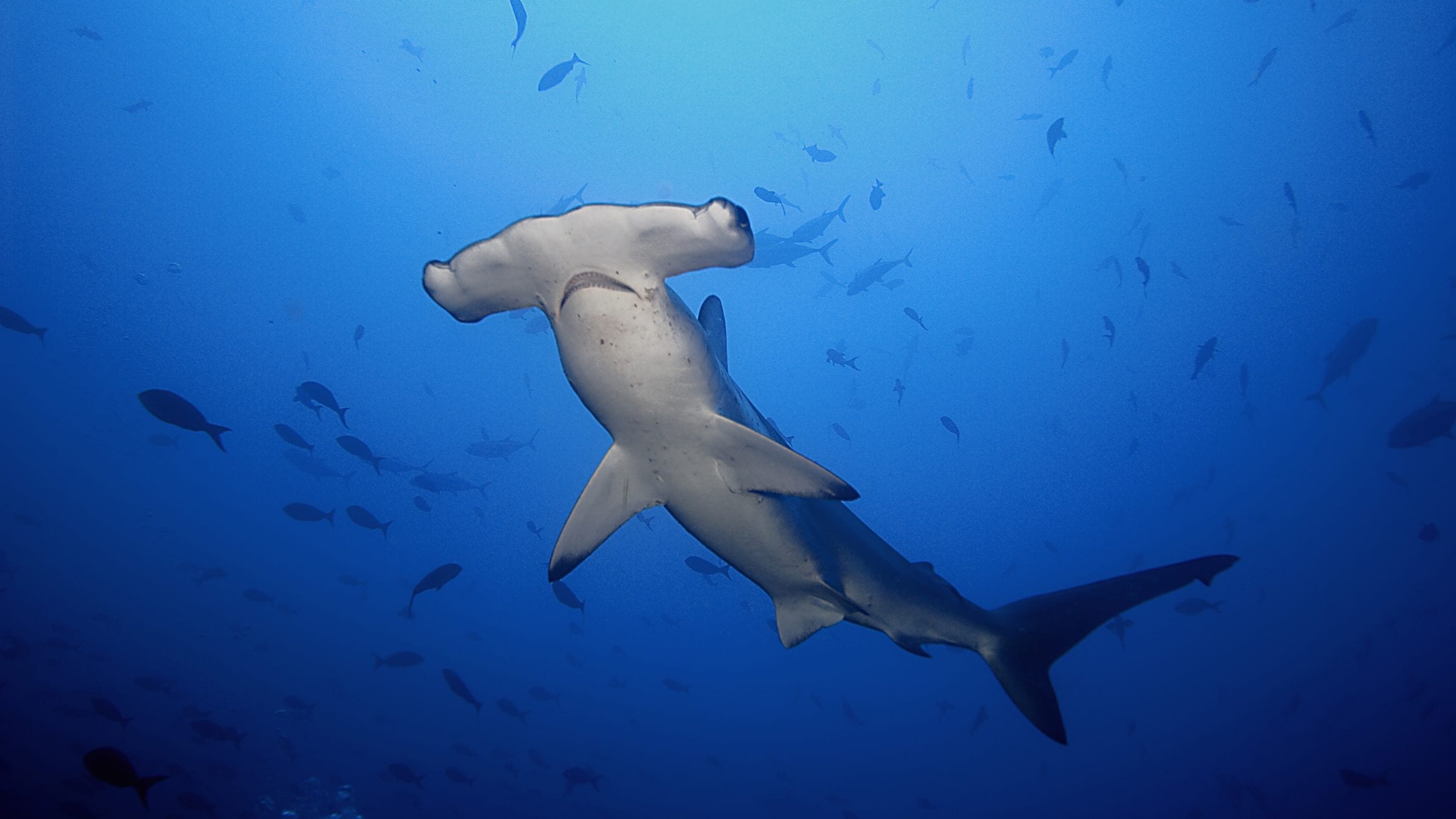
 Hammerhead sharks are widely distributed in tropical and temperate marine waters near the coasts and above the continental shelves. |
 Great hammerheads primarily feed on prey at the seafloor, such as stingrays, cephalopods (octopus and squid), crustaceans and other sharks |
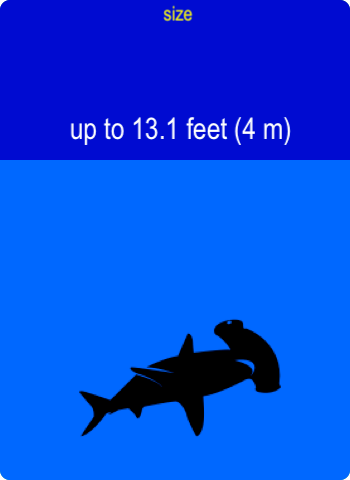
|
They have the unique shaped head that has made them such a fascinating to experts as well as to the general public. There is no other species of shark out there compared to the look of the Hammerhead Shark.this species of shark has a head that is wide like the head of a hammer and then a long handle as it goes back to the rest of the body. This shape is actually appropriately called cephalofoil. This shape allows them to have excellent sensory receptors, to easily manipulate their prey, and for them to move around in the water with ease.
There are several subspecies of them, and they can dramatically vary in size. Some of them are only 3 feet long and others can grow to a size of up to 20 feet long. They can also vary a great deal in weight from 500 pounds up to 1,000 pounds. Both location and their food sources also influence the overall size of Hammerhead Sharks. They feature a light gray color but if you pay close attention to them you will also see a green-colored tint as well. They have a white belly so that they can easily sneak up on their prey in the water.
It is believed that they have better vision than other species of sharks due to the shape of the head and location of their eyes. They have a 360-degree vision so that they can see above and below them in the water at the same time. They also rely on their electro receptor sensors so that they can feel vibrations and movements in the water. This makes it very simple for them to find prey even if it is barely moving in the water. Their mouths seem to be very small in proportion to their heads.